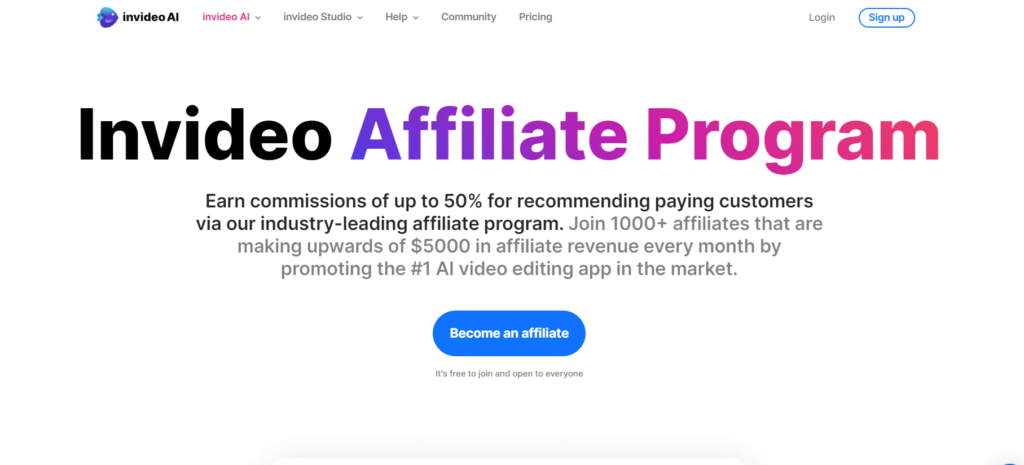5 Best Free Methods to Make Money with AI Tools
1. Leverage AI-Powered Recommendation Engines
AI-powered recommendation engines use machine learning to analyze user data and provide personalized recommendations. This technology enhances user experience, increases engagement, boosts sales, and improves customer retention by offering tailored content and product suggestions.
Benefits
- Personalized User Experience: Offers relevant content.
- Increased Engagement: Encourages more interactions.
- Boosted Sales: Higher conversion rates.
- Improved Retention: Increases customer loyalty.
- Data Insights: Provides valuable user behavior data.
How They Work
- Data Collection: Gather user data.
- Data Processing: Analyze data with machine learning.
- Model Training: Train models on user data.
- Recommendations: Generate personalized suggestions.
- Continuous Learning: Update models with new data.
Implementation Steps
- Identify Goals: Define what you want to achieve.
- Choose Tools: Select appropriate AI platforms (e.g., TensorFlow, Amazon Personalize).
- Prepare Data: Collect and clean user data.
- Develop Models: Train machine learning models.
- Integrate: Embed the engine into your platform.
- Monitor: Continuously improve the system.
Examples
- E-commerce: Amazon suggests products based on past behavior.
- Streaming Services: Netflix recommends shows based on viewing habits.
- Social Media: Facebook tailors posts and ads to user interests.
AI-powered recommendation engines enhance user experience and drive business growth through personalized suggestions. Implementing these engines involves data collection, tool selection, model training, integration, and continuous optimization. Embrace this technology to stay competitive and better serve your customers.
2. Create a Faceless YouTube Channel with AI-Automated Videos
Creating a faceless YouTube channel is an excellent way to share content without being on camera. By leveraging AI-automated video creation tools, you can produce high-quality videos efficiently and consistently. In this guide, we’ll walk you through the steps to start your own faceless YouTube channel, from concept to content creation and growth strategies.
1. Choose Your Niche
The first step is to decide on a niche for your channel. Consider topics you are passionate about and that have a substantial audience on YouTube. Popular niches for faceless channels include:
- Tech reviews and tutorials
- Educational content
- Animation and storytelling
- Meditation and relaxation
- Top 10 lists and compilation videos
2. Plan Your Content
Once you’ve chosen your niche, brainstorm video ideas that align with your channel’s theme. Create a content calendar to plan out your videos in advance. This will help you stay consistent with your uploads, which is crucial for growing your audience.
3. Select AI Video Creation Tools
Several AI tools can help you create videos without showing your face. Here are some popular options:
- Pictory: Converts text into engaging videos using stock footage, music, and voiceovers.
- Synthesia: Creates videos with AI-generated avatars and voiceovers.
- Lumen5: Transforms blog posts or articles into videos with text, images, and music.
- InVideo: Offers templates and AI tools to create professional-looking videos quickly.

4. Script Your Videos
Write scripts for your videos that are informative, engaging, and tailored to your audience. A good script is essential for keeping viewers interested and ensuring your message is clear. Use natural language and conversational tone to make your videos more relatable.
5. Create Voiceovers
If you prefer not to use your voice, AI voice generators like Google Text-to-Speech, Amazon Polly, or natural-sounding voices from Murf.ai can be used. These tools allow you to convert your scripts into lifelike voiceovers.
6. Assemble Your Videos
Using your chosen AI tool, combine your scripts, voiceovers, and relevant visuals. Ensure that your videos have a professional look and feel. Add background music, sound effects, and transitions to enhance the overall quality.
7. Optimize for SEO
To maximize your reach, optimize your videos for search engines. Here are some SEO tips for YouTube:
- Title: Use your keyphrase in the title of your video. Make it catchy and descriptive.
- Description: Write a detailed description using your keyphrase naturally. Include relevant keywords and provide a summary of your video.
- Tags: Add tags related to your video’s content and niche.
- Thumbnail: Create an eye-catching thumbnail to increase click-through rates.
- Closed Captions: Include closed captions to make your content accessible and improve SEO.
8. Promote Your Channel
Promote your channel on social media, blogs, and forums related to your niche. Engage with your audience by responding to comments and encouraging discussions. Collaborate with other YouTubers in your niche to expand your reach.
9. Analyze and Adjust
Regularly review your channel’s analytics to understand what works and what doesn’t. Keep an eye on numbers like how long people watch your videos, how many stay until the end, and how often they click on your videos. Use this information to make your videos better and plan your content more effectively.
3. Sell AI-Generated Images
With advancements in artificial intelligence, creating and selling AI-generated images has become a viable way to earn money. This guide will walk you through the process of generating high-quality images using free AI tools and selling them online.
1. Understanding AI-Generated Images
AI-generated images are created using artificial intelligence algorithms that can produce art, graphics, and photographs. These tools can generate unique and appealing images that can be sold on various online platforms.
2. Choosing Free AI Tools for Image Generation
There are several free AI tools available for creating images. Here are some popular options:
- DeepArt.io: Turns your photos into artwork using AI.
- Artbreeder: Allows you to create and modify images using genetic algorithms.

- RunwayML: Offers a variety of AI models for image generation.
- NightCafe Creator: Uses neural networks to create art from simple text prompts.
3. Generating Images
Once you have chosen your AI tool, start generating images. Here are the steps:
- Select a Tool: Choose an AI tool that suits your needs.
- Input Data: Provide input data, such as text prompts or base images.
- Customize Settings: Adjust the settings to refine the output.
- Generate Images: Let the AI generate your images.
- Review and Edit: Review the generated images and make any necessary edits.
4. Preparing Images for Sale
Before you start selling, ensure your images are ready for the market:
- High Resolution: Ensure your images are of high resolution and quality.
- Watermarking: Add watermarks to protect your images from unauthorized use.
- Metadata: Add metadata, including titles, descriptions, and keywords to make your images searchable.
5. Choosing Platforms to Sell AI-Generated Images
There are various platforms where you can sell your images:
- Stock Photo Sites: Websites like Shutterstock, Adobe Stock, and iStock allow you to sell stock images.
- Print-on-Demand Services: Platforms like Redbubble, Society6, and Printful enable you to sell prints, merchandise, and more.
- NFT Marketplaces: Websites like OpenSea and Rarible let you sell digital art as NFTs (non-fungible tokens).
6. Creating a Portfolio
Build a portfolio to showcase your work:
- Website: Create a professional website using platforms like Wix or Squarespace.
- Social Media: Use Instagram, Pinterest, and other social media to share your images and attract potential buyers.
- Online Marketplaces: Set up profiles on online marketplaces to display and sell your images.
7. Marketing Your Images
To attract buyers, you need to market your images effectively:
- SEO: Optimize your titles, descriptions, and keywords for search engines.
- Social Media Marketing: Promote your images on social media platforms.
- Email Marketing: Build an email list and send newsletters showcasing your latest work.
- Collaborations: Collaborate with influencers and bloggers to reach a wider audience.
- Paid Advertising: Consider using Google Ads or Facebook Ads to promote your images.
8. Managing Sales and Customer Relations
Once you start selling, manage your sales and customer relations efficiently:
- Track Sales: Use tools to track your sales and analyze performance.
- Customer Service: Provide excellent customer service to build a loyal customer base.
- Feedback: Encourage customer feedback and use it to improve your offerings.
Selling AI-generated images using free AI tools is a lucrative way to earn money. By choosing the right tools, generating high-quality images, and effectively marketing them, you can create a successful online business. Start exploring AI tools today and turn your creativity into profit!
4. Leverage AI Writing Tools for eBooks and Blogs
In the digital age, producing engaging and high-quality content is crucial for success. Whether you are writing eBooks or blog posts, leveraging AI writing tools can significantly streamline the process and improve your output. This comprehensive guide will explore the benefits of AI writing tools, highlight popular options, and provide strategies for integrating them into your writing routine.
Benefits of AI Writing Tools
AI writing tools offer numerous advantages for authors and bloggers:
- Increased Productivity: AI tools can help generate content quickly, allowing you to focus on refining and enhancing your work.
- Consistency: Maintain a consistent tone and style across all your writings.
- Grammar and Style Checking: Automatically correct grammatical errors and suggest style improvements.
- Inspiration: Generate ideas and overcome writer’s block with AI-powered suggestions.
- SEO Optimization: Enhance your content’s SEO with keyword suggestions and optimization tips.
Popular AI Writing Tools
Here are some popular AI writing tools that can help you create outstanding eBooks and blogs:
- Grammarly: An advanced grammar checker that also offers style and tone suggestions.
- Jasper: (formerly Jarvis): A powerful AI writing assistant that can generate articles, blog posts, and even eBook content.
- Writesonic: An AI tool that creates SEO-friendly content, including blog posts, product descriptions, and more.
- Copy.ai: Specializes in generating marketing copy, blog posts, and other types of written content.
- Hemingway Editor: Helps make your writing clear and concise by highlighting complex sentences and common errors.
How to Leverage AI Writing Tools for eBooks
-
Outline Your eBook:
- Use AI tools to brainstorm and organize your ideas into a structured outline.
-
Generate Content:
- Write the initial draft using AI writing tools to quickly produce content based on your outline.
- Utilize AI for generating sections or chapters, ensuring consistency and coherence.
-
Editing and Refining:
- Use grammar and style-checking tools to polish your content.
- Employ tools like Hemingway Editor to simplify and clarify your writing.
-
SEO Optimization:
- Optimize your eBook content for search engines by integrating relevant keywords and phrases suggested by AI tools.
-
Cover Design and Formatting:
- AI tools can also assist in designing eye-catching covers and formatting your eBook for various platforms.
How to Leverage AI Writing Tools for Blogs
-
Idea Generation:
- Use AI to brainstorm blog topics and generate content ideas based on current trends and keywords.
-
Writing the Draft:
- Write your blog post using AI tools to help with content creation, ensuring it is engaging and informative.
-
Grammar and Style:
- Utilize AI to check for grammatical errors and improve the style and readability of your blog post.
-
SEO Optimization:
- Integrate AI suggestions for keywords, meta descriptions, and other SEO elements to enhance your blog’s visibility.
-
Content Scheduling and Publishing:
- Some AI tools offer features for scheduling and publishing blog posts, making the process seamless and efficient.
Best Practices for Using AI Writing Tools
-
Combine Human Creativity with AI Efficiency:
- Use AI tools to enhance your writing, but always add a personal touch to ensure your content remains unique and authentic.
-
Continuous Learning:
- Stay updated with the latest advancements in AI writing tools to take full advantage of new features and capabilities.
-
Review and Revise:
- Always review and revise the content generated by AI to maintain high quality and relevance.
-
Ethical Considerations:
- Be transparent about using AI in your writing process and ensure your content adheres to ethical standards.
Leveraging AI writing tools for eBooks and blogs can significantly enhance your productivity, consistency, and content quality. By integrating these tools into your writing process, you can focus more on creativity and less on tedious tasks. Explore different AI writing tools, implement the best practices outlined in this guide, and start producing exceptional content that engages and informs your audience.
5. Become a Freelance Photo Editor Using Generative AI
In the digital age, producing engaging and high-quality content is crucial for success. Whether you are writing eBooks or blog posts, leveraging AI writing tools can significantly streamline the process and improve your output. This comprehensive guide will explore the benefits of AI writing tools, highlight popular options, and provide strategies for integrating them into your writing routine.
Benefits of AI Writing Tools
AI writing tools offer numerous advantages for authors and bloggers:
- Increased Productivity: AI tools can help generate content quickly, allowing you to focus on refining and enhancing your work.
- Consistency: Maintain a consistent tone and style across all your writings.
- Grammar and Style Checking: Automatically correct grammatical errors and suggest style improvements.
- Inspiration: Generate ideas and overcome writer’s block with AI-powered suggestions.
- SEO Optimization: Enhance your content’s SEO with keyword suggestions and optimization tips.
Popular AI Writing Tools
Here are some popular AI writing tools that can help you create outstanding eBooks and blogs:
- Grammarly: An advanced grammar checker that also offers style and tone suggestions.
- Jasper (formerly Jarvis): A powerful AI writing assistant that can generate articles, blog posts, and even eBook content.
- Writesonic: An AI tool that creates SEO-friendly content, including blog posts, product descriptions, and more.

- Copy.ai: Specializes in generating marketing copy, blog posts, and other types of written content.
- Hemingway Editor: Helps make your writing clear and concise by highlighting complex sentences and common errors.
How to Leverage AI Writing Tools for eBooks
Outline Your eBook:
- Use AI tools to brainstorm and organize your ideas into a structured outline.
Generate Content:
- Write the initial draft using AI writing tools to quickly produce content based on your outline.
- Utilize AI for generating sections or chapters, ensuring consistency and coherence.
Editing and Refining:
- Use grammar and style-checking tools to polish your content.
- Employ tools like Hemingway Editor to simplify and clarify your writing.
SEO Optimization:
- Optimize your eBook content for search engines by integrating relevant keywords and phrases suggested by AI tools.
Cover Design and Formatting:
- AI tools can also assist in designing eye-catching covers and formatting your eBook for various platforms.
How to Leverage AI Writing Tools for Blogs
Idea Generation:
- Use AI to brainstorm blog topics and generate content ideas based on current trends and keywords.
Writing the Draft:
- Write your blog post using AI tools to help with content creation, ensuring it is engaging and informative.
Grammar and Style:
- Utilize AI to check for grammatical errors and improve the style and readability of your blog post.
SEO Optimization:
- Integrate AI suggestions for keywords, meta descriptions, and other SEO elements to enhance your blog’s visibility.
Content Scheduling and Publishing:
- Some AI tools offer features for scheduling and publishing blog posts, making the process seamless and efficient.
Best Practices for Using AI Writing Tools
Combine Human Creativity with AI Efficiency:
- Use AI tools to enhance your writing, but always add a personal touch to ensure your content remains unique and authentic.
Continuous Learning:
- Stay updated with the latest advancements in AI writing tools to take full advantage of new features and capabilities.
Review and Revise:
- Always review and revise the content generated by AI to maintain high quality and relevance.
Ethical Considerations:
- Be transparent about using AI in your writing process and ensure your content adheres to ethical standards.
Conclusion
Leveraging AI writing tools for eBooks and blogs can significantly enhance your productivity, consistency, and content quality. By integrating these tools into your writing process, you can focus more on creativity and less on tedious tasks. Explore different AI writing tools, implement the best practices outlined in this guide, and start producing exceptional content that engages and informs your audience.
Popular Post
-
 Vedanta-Owned Hindustan Zinc Shares Surge Major Announcement
Vedanta-Owned Hindustan Zinc Shares Surge Major Announcement -
 Earn ₹1000/Day with These 5 Websites: Easy Online Tasks
Earn ₹1000/Day with These 5 Websites: Easy Online Tasks -
 "Discover 10 exciting ways to earn with ChatGPT on Facebook!"
"Discover 10 exciting ways to earn with ChatGPT on Facebook!" -
 2024 Election Results: BJP Secures Victory with 240 Seats
2024 Election Results: BJP Secures Victory with 240 Seats -
 Transform Your Finances With Chatgpt: Discover 6 Side Hustles
Transform Your Finances With Chatgpt: Discover 6 Side Hustles -
 T20 World Cup Prize Money: South Africa Wins Rs 10.67 Crore, India's Earnings...
T20 World Cup Prize Money: South Africa Wins Rs 10.67 Crore, India's Earnings... -
 8 Habits of Financially Smart Women You Need to Adopt Today"
8 Habits of Financially Smart Women You Need to Adopt Today" -
 India’s First Exclusive Drone Showroom in Chennai
India’s First Exclusive Drone Showroom in Chennai -
 Effortlessly Build Profitable Blogs with ChatGPT
Effortlessly Build Profitable Blogs with ChatGPT -
 Gavaskar Challenges Virat After Poor Performance Against Ireland
Gavaskar Challenges Virat After Poor Performance Against Ireland -
 5 Best Free Methods to Make Money with AI Tools
5 Best Free Methods to Make Money with AI Tools -
 SEO vs GEO : Navigating the Digital Landscape
SEO vs GEO : Navigating the Digital Landscape -
 Halsey Opens Up About Health and Drops New Song "The End"
Halsey Opens Up About Health and Drops New Song "The End" -
 Check out these 4 trusted online earning sites
Check out these 4 trusted online earning sites -
 National Best Friend Day 2024: Friendship with Wishes, Messages, and Quotes
National Best Friend Day 2024: Friendship with Wishes, Messages, and Quotes -
 ONDC CEO Thampy Koshy Targets 40-50 Million Monthly Transactions by Year-End
ONDC CEO Thampy Koshy Targets 40-50 Million Monthly Transactions by Year-End -
 Pakistan vs USA: T20 World Cup 2024 Preview
Pakistan vs USA: T20 World Cup 2024 Preview -
 How India is Handling Heatwaves and Environmental Issues
How India is Handling Heatwaves and Environmental Issues -
 The second pre-wedding celebrations for Anant Ambani and Radhika Merchant are scheduled to take place in Italy.
The second pre-wedding celebrations for Anant Ambani and Radhika Merchant are scheduled to take place in Italy. -
 T20 World Cup Stoinis Leads Australia to Victory Over Oman in
T20 World Cup Stoinis Leads Australia to Victory Over Oman in

